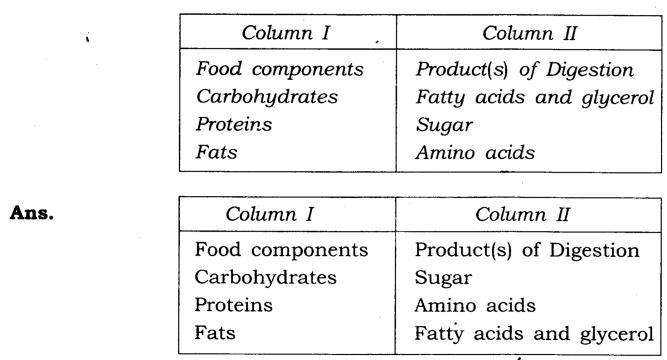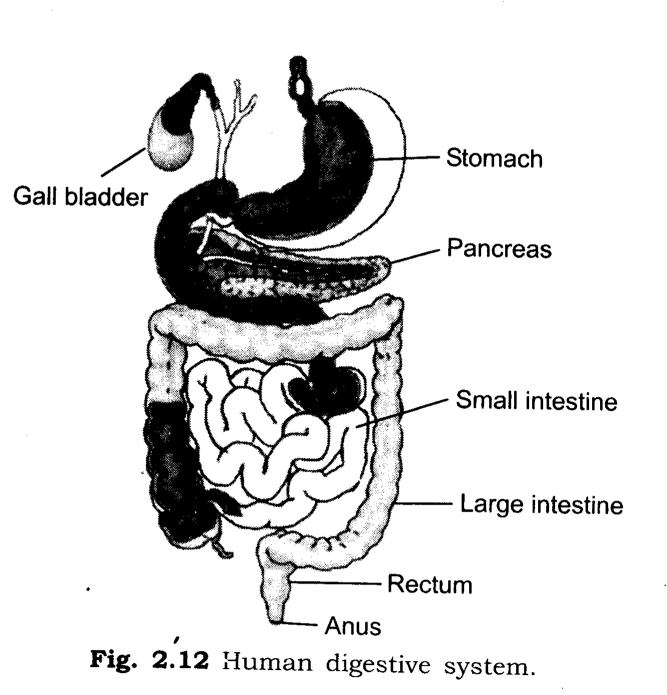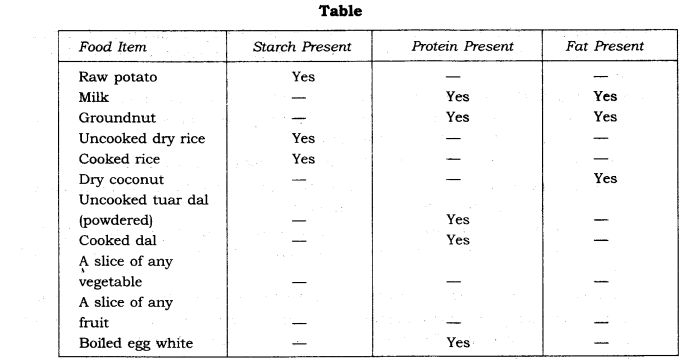EVENTS CONVENT HIGH SCHOOL
01/10/2021 CLASS-11 SESSION 2021-22
SUBJECT :ENGLISH SNAPSHOT
CHAPTER-2
THE ADDRESS
______________________________________
A. Reading With Insight
Question 1:
‘Have you come back?’ said the woman, ‘I thought that no one had come back.’ Does this statement give some clue about the story? If yes, what is it?
Answer:
Yes, this statement gives some clue about the story. During the early part of the war Mrs Dorling had shifted the important belongings of her acquaintance Mrs S. from her house to 46, Marconi Street. These included table silver wares, antique plates and other nice things such as the iron anukkah candle-holder, woollen table cloth and green knitted cardigan with wooden buttons. Since Mrs S. had died during the war, Mrs Dorling did not expect anyone to come back and claim her costly belongings as she thought no one else knew her address.
The statement indicates the greedy and possessive nature of Mrs Dorling. She did not open the door to the daughter of her former acquaintance nor did she show any signs of recognition. She did not let the girl in. She refused to see her then saying it was not convenient for her to do. The narrator had gone to this address with a specific purpose—to see her mother’s belongings.
Even when she told Mrs Dorling that only she had come back, the woman with a broad back did not soften a bit. Thus the clash of interests is hinted at by the aforesaid statement.
Question 2:
The story is divided into pre-war and post-war times. What hardships do you think the girl underwent during these times?
Answer:
During the pre-war times, the narrator lived in some other city far away from home and she visited her mother only for a few days. During the first half of the war the narrator’s mother was always afraid that they might have to leave the place and lose all valuable belongings. The narrator lived in the city in a small rented room. Its windows were covered with blackout paper. She could not see the beauty of nature outside her room. The threat of death loomed large.
After the liberation, everything became normal again. Bread was getting to be a lighter colour. She could sleep in her bed without any fear of death. She could glance out of the window of her room each day. One day, she was eager to see all the possessions of her mother, which she knew were stored at number 46, Marconi Street. She went to that address. She felt disappointed when Mrs Dorling neither recognised her nor let her in. She asked her to come again someday. It was evident she wanted to put her off. She was eager to see, touch and remember her mother’s possessions. So, she had to take the trouble of visiting the place again.
Question 3:
Why did the narrator of the story want to forget the address?
Answer:
The narrator remembered the address her mother had told her only once. It was number 46, Marconi Street. Her mother’s acquaintance Mrs Dorling lived there. She had stored the valuable belongings of the narrator’s mother there. After her mother’s death, the narrator had an urge to visit the place. She wanted to see those things, touch them and remember. She went to the given address twice. She was successful in her second attempt to enter the living room. .
She found herself in the midst of things she wanted to see again. She felt oppressed in the strange atmosphere. Everything was arranged in a tasteless way. The ugly furniture and the muggy smell that hung there seemed quite unpleasant. These objects evoked the memory of the familiar life of former time. But they had lost their value since they had been separated from her mother and stored in strange surroundings. She no longer wanted to see, touch or remember these belongings. She resolved to forget the address. She wanted to leave the past behind and decided to move on.
Question 4:
‘The Address’ is a story of human predicament that follows war. Comment.
Answer:
The war creates many difficult and unpleasant situations for human beings. Sometime it becomes difficult to know what to do. The human predicament that follows war is amply illustrated through the experience of the narrator. The war had caused many physical difficulties as well as emotional sufferings to her. She had lost her dear mother. She went to 46, Marconi Street to see her mother’s valuable possessions. How greedy and callous human beings can become is exemplified by the behaviour of Mrs Dorling. She had stored all the valuable belongings of the narrator’s mother, but she refused to recognise the narrator. She did not even let her in. The presence of her mother’s possessions in strange atmosphere pained her. Now these valuables had lost all their importance for her as they had been separated from her mother. She could get no solace or comfort from them.
A. Short Answer Type Questions
Question 1:
How did Mrs Dorling react when the narrator said, m Mrs S’s daughter”?
Answer:
Mrs Dorling held her hand on the door as if she wanted to prevent it opening any
further. Her face showed no sign of recognition. She kept staring at the narrator without uttering a word.
Question 2:
What two reasons did the narrator give to explain that she was mistaken?
Answer:
She thought that perhaps the woman was not Mrs Dorling. She had seen her only once, for a brief interval and that too years ago. Secondly, it was probable that she had rung the wrong bell.
Question 3:
How did the narrator conclude that she was right?
Answer: The woman was wearing the green knitted cardigan of the narrator’s mother. The wooden buttons were rather pale from washing. She saw that the narrator was looking at the cardigan. She half hid herself again behind the door. Her reaction convinced the narrator that she was right.
Question 4:
What was the outcome of the interview between Mrs Dorling and the narrator?
Answer:
The interview was a flop as far as the narrator was concerned. Mrs Dorling refused
to see her and talk to her in spite of the narrator’s repeated requests.
Question 5:
Who had given the narrator the address, when and under what circumstances?
Answer:
The narrator’s mother had given her the address, years ago during the first half of
the war. The narrator came home for a few days and missed various things in the rooms. Then her mother told her about Mrs Dorling and gave her the address.
Question 6:
What did the narrator learn about Mrs Dorling from her mother?
Answer:
Mrs Dorling was an old acquaintance of the narrator’s mother. The latter had not seen her for several years. Then she suddenly turned up and renewed their contact.
Every time she left that place she took something with her—table silver, antique plates, etc. –
Question 7:
What reason did Mrs Dorling give for taking away the precious belongings of the narrator’s mother?
Answer:
Mrs Dorling suggested to the narrator’s mother that she should store her belongings at a safer place. She wanted to save all her nice things. She explained that they would lose everything if they had to leave the place.
Question 8:
What impression do you form of the narrator’s mother on the basis of her conversation with (i) Mrs Dorling and (ii) the narrator?
Answer:
The narrator’s mother was a kind-hearted, generous and liberal lady. She was fond of collecting valuable things. She is more worried about the physical risk to Mrs Dorling than losing them to her. She thought it an insult to tell her friends to keep those things for ever.
Question 9:
Did the narrator fee Up evinced about the views of her mother regarding Mrs Dorling? How do you know?
Answer:
The narrator did not feel convinced about her mother’s concern for Mrs Dorling.
The latter was keen on removing the precious possessions of the narrator’s mother to her own house. It seems that the narrator did not like Mrs Darling’s excessive interest in her mother’s belongings. It is evident from the questions she puts to her mother.
Question 10:
What does the narrator remember about Mrs Dorling as she saw her for the first time?
Answer:
Mrs Dorling was a woman with a broad back. She wore a brown coat and a shapeless hat. She picked up a heavy suitcase lying under the coat rack and left their house.
She lived at number 46, Marconi Street.
Question 11:
Why did the narrator wait a long time before going to the address number 46, Marconi Street?
Answer:
Initially, after the liberation, she was not at all interested in her mother’s belongings lying stored there. She was also afraid of being confronted with things that had belonged to her mother, who was now no more.
Question 12:
When did the narrator become curious about her mother’s possessions?
Answer:
The narrator became curious about her mother’s possessions as normalcy returned in the post-liberation period. She knew that those things must still be at the address her mother told her. She wanted to see them, touch and remember.
Question 13:
“I was in a room I knew and did not know,” says the narrator in the story ‘The Address’. What prompted her to make this observation?
Answer:
The narrator found herself in the midst of things she was familiar with and which she did want to see again. However, she found them in a strange atmosphere where everything was arranged in a tasteless way. They ugly furniture and the muggy smell created the feeling that she didn’t know the room.
Question 14:
“I just looked at the still life over the tea table,” says the narrator in the story ‘The Address’. What does she mean by ‘the still life? What prompted her to make this remark?
Answer:
By ‘the still life’, the narrator means the things over the tea table such as the table-cloth, tea pot, cups and spoons. The reference to antique box and silver spoons prompted her to make this remark.
Question 15:
How was the narrator able to recognise her own familiar woollen table- cloth?
Answer:
The narrator first stared at the woollen table-cloth. Then she followed the lines of the pattern. She remembered that somewhere there was a bum mark which had not been repaired. At last she found the bum mark on the table-cloth. This helped her to recognise her own familiar article.
Question 16:
“You only notice when something is missing.” What does the speaker exactly mean? What examples does she give?
Answer:
The speaker says that one gets used to touching one’s lovely things in the house. One hardly looks at them any more. It is only when something is missing that it is noticed either because it is to be repaired or it has been lent to someone.
Question 17:
How did narrator come to know that the cutlery they ate off every day was silver?
Answer:
Once the narrator’s mother asked her if she would help her polish the silver. The
narrator asked her which silver she meant. Her mother was surprised at her ignorance and replied that it was the spoons, forks and knives, i.e. the cutlery they ate off everyday.
Question 18:
Why did the narrator suddenly decide to leave?
Answer:
The narrator had visited 46, Marconi Street for a specific purpose—to see her mother’s belongings and touch them. However, these objects seemed to have lost their value in strange surroundings and on being severed from the life of former times.
Question 19:
How did the narrator reconcile herself to the loss of her mother’s precious belongings?
Answer:
The narrator felt that her mother had only lent them for safe custody and Mrs Dorling was not to keep everything. On seeing these objects, memories of her former life were aroused. She found no room for these precious belongings in her present life. So she reconciled to her fate.
Question 20:
“Of all the things I had to forget, that would be the easiest”. What does the speaker mean by ‘that’? What is its significance in the story?
Answer:
That’ here stands for the address. The words: number 46, Marconi Street, i.e. the address recur throughout the story. The address is important for the narrator at the beginning of the story. However, at the end of the story she resolves to forget it as she wants to break off with the past and move on with the present into the future.






